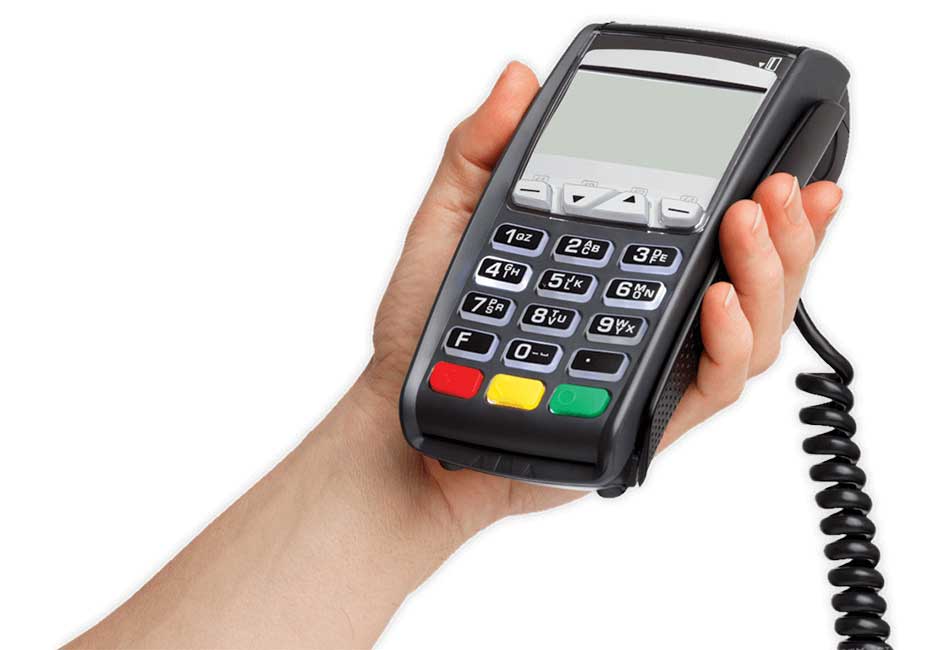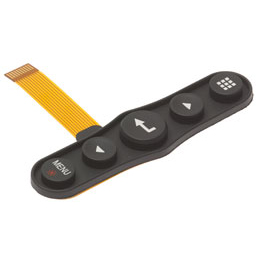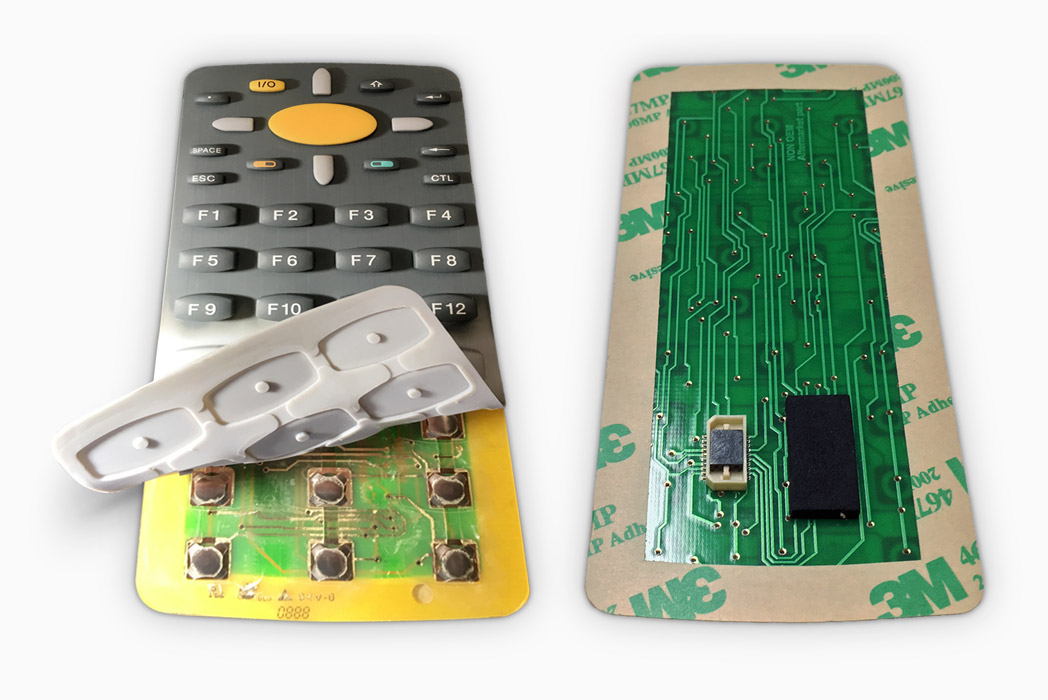Uncovering the Diverse Makes Use Of and Keys In of Rubber Keypads in the Innovation Landscape Today
Rubber keypads have actually developed themselves as essential components in numerous technological applications. Their versatility makes them ideal for consumer electronic devices, industrial machines, and clinical gadgets. As these keypads remain to advance, brand-new customization alternatives and layout trends emerge. This prompts a better evaluation of their benefits and manufacturing procedures. Recognizing these elements may expose why rubber keypads continue to be a preferred option in the innovation landscape. What lies ahead for this flexible element?
Review of Rubber Keypads
Rubber keypads act as an essential element in numerous digital tools, supplying a tactile user interface for user interaction. These keypads are commonly made from silicone or rubber materials, which supply adaptability and resilience. Their layout commonly incorporates elevated icons or letters, enhancing use by allowing users to feel the keys - Rubber Keypads. Rubber keypads are immune to dust, moisture, and use, making them appropriate for demanding settings
They can be customized concerning shape, shade, and dimension, permitting manufacturers to produce one-of-a-kind user interfaces tailored to certain products. The production procedure typically involves strategies such as molding and printing, making sure high-quality result. Therefore, rubber keypads not just enhance functionality however likewise contribute to the total aesthetic appeals of the device. With these characteristics, rubber keypads stay a prominent selection for both customers and makers, emphasizing their importance in the technology landscape.
Typical Applications in Customer Electronics
While several digital devices rely on touchscreens for individual interaction, rubber keypads continue to play an essential duty in consumer electronic devices. These keypads are extensively utilized in devices such as push-button controls, pc gaming controllers, and house appliances, where tactile feedback enhances customer experience. Their toughness and resistance to put on make them excellent for devices regularly subjected to hefty usage.
Rubber keypads are also popular in mobile phones and mobile gizmos, where compact designs require receptive and trustworthy input methods. The capability to personalize the form and appearance of rubber keypads enables producers to create unique styles that interest customers. Furthermore, the soft touch of rubber gives comfort throughout prolonged use, making these keypads a preferred selection for gadgets needing extended interaction. On the whole, rubber keypads stay an essential part in the consumer electronics landscape, integrating performance with easy to use attributes.
Role in Industrial and Medical Tools
Rubber keypads play an essential function in both clinical and industrial equipment, supplying toughness and reliability sought after settings. In commercial setups, they are often made use of in control panels and equipment, boosting operator interaction with complex systems. In the clinical field, rubber keypads help with user-friendly interfaces for gadgets that call for precision and hygiene.
Industrial Equipment Applications
Keypads play a vital role in the capability and customer experience of clinical and industrial tools. In industrial setups, rubber keypads provide a durable interface for machinery and control systems, allowing operators to conveniently input commands and adjust settings. Their resistance to dirt, wetness, and chemicals warranties reliability under harsh problems regular of manufacturing facilities and manufacturing plants. In addition, the responsive comments supplied by rubber keypads enhances customer communication, reducing the likelihood of input mistakes. In addition to conventional equipment, these keypads are integral in automated robotics and systems, where precision is vital. The adaptability of rubber keypads in different industrial applications underscores their significance in boosting operational efficiency and guaranteeing security in intricate settings.
Medical Gadget Assimilation
As clinical tools progressively call for easy to use user interfaces, the combination of rubber keypads has actually become vital in making sure efficient communication in between medical care experts and devices. These keypads offer tactile comments, helping with instinctive operation also in high-pressure settings. Their durability and resistance to rough cleaner make them optimal for clinical setups, where health and longevity are crucial. In addition, rubber keypads can be tailored to include different shapes, dimensions, and shades, boosting aesthetic acknowledgment and access for users. This flexibility enables for the creation of specialized controls customized to certain clinical functions, boosting overall performance. As a result, the function of rubber keypads in medical device assimilation not only improves performance yet also promotes individual safety and security and operational reliability in healthcare environments.
Modification Options and Style Trends

Current design patterns stress minimalism and ergonomics, prioritizing individual comfort and user-friendly communication. Customized logos and branding can be incorporated right into keypads, enabling firms to keep a cohesive brand identification throughout their products. In addition, advancements in producing methods, such as silicone molding, have made it simpler to attain complex layouts and customized formats.
Advantages of Rubber Keypads Over Other Types

Rubber keypads are likewise known for their sturdiness and resistance to environmental elements. They can hold up against dampness, temperature, and dirt changes, making them optimal for outside or commercial settings. Additionally, rubber keypads are typically quieter than their plastic or steel counterparts, decreasing noise contamination in common environments.
Moreover, the cost-effectiveness of rubber keypads makes them an eye-catching alternative for makers. Their light-weight nature contributes to lower shipping costs, while their personalized layouts satisfy details branding needs. On the whole, rubber keypads stand for a dependable and versatile option in the innovation landscape.
Manufacturing Techniques for High Quality and Sturdiness
In the manufacturing of rubber keypads, the selection of proper products and molding procedures plays a vital function in identifying general top quality and resilience. Various molding techniques, such as compression and injection molding, substantially influence the final item's performance. Recognizing these elements is essential for achieving ideal cause rubber keypad production.
Molding Procedures Discussed
A selection of molding processes play an essential function in the manufacturing of rubber keypads, making sure both high quality and durability. The most common strategies include compression molding, transfer molding, and shot molding. Compression molding entails placing rubber in a warmed mold and mildew, where warmth and pressure shape it right into the wanted form. Transfer molding allows for even more precise control over product circulation and is appropriate for complicated designs (Rubber Keypads). Injection molding, recognized for its rate and effectiveness, injects molten rubber into a mold under high stress, creating high-volume get rid of regular top quality. Each approach uses distinctive advantages, influencing factors such as manufacturing rate, layout, and price flexibility, eventually influencing the efficiency and lifespan of rubber keypads in different applications
Product Selection Relevance
Product choice plays an important function in the production of rubber keypads, directly affecting their efficiency and resilience. The selection of rubber substances, such as Read Full Report silicone or polyurethane, impacts responsive responses, resistance to use, and ecological toughness. Top notch products ensure that keypads can endure comprehensive usage, maintaining their capability gradually. In addition, the formula of rubber influences its resistance to temperature level fluctuations and exposure to chemicals, which are vital for tools in numerous atmospheres. Utilizing innovative manufacturing strategies, such as compression or shot molding, more boosts the structural stability of keypads. Inevitably, mindful material selection and manufacturing procedures add significantly to the overall high quality, long life, and user fulfillment of rubber keypads in today's innovation landscape.
Future Fads in Rubber Keypad Modern Technology
As innovation remains to progress, the future of rubber keypad technology appears promising, with developments poised to enhance capability and customer experience. One notable pattern is the integration of touch-sensitive innovation, allowing capacitive comments that mimics the feel of typical switches while giving improved responsiveness. Additionally, the advancement of antimicrobial products is most likely to get traction, addressing hygiene issues in common and public devices.
Modification alternatives are anticipated to expand, allowing individuals to personalize crucial layouts and responsive feedback, thus catering to varied demands. The consolidation of smart innovation, such as connectivity features, might additionally arise, permitting rubber keypads to interact with other devices effortlessly. As suppliers concentrate on sustainability, environmentally friendly materials are expected to come to be a lot more prevalent, aligning with international environmental goals. Overall, these fads assure to reinvent rubber keypads, making them more flexible, straightforward, and environmentally aware in the modern technology landscape.
Regularly Asked Inquiries
Just How Do Rubber Keypads Compare in Price to Various Other Keypad Types?
Rubber keypads generally provide an affordable remedy compared to various other keypad types, such as membrane layer or mechanical alternatives. Their reduced production expenditures and longevity make them an appealing option for numerous applications in technology.
What Are the Ecological Influences of Rubber Keypad Manufacturing?

The environmental influences of rubber keypad manufacturing include resource exhaustion, energy intake, and pollution from producing procedures. In addition, improper disposal can bring about plastic waste, adding to ecological degradation and harming ecosystems otherwise handled properly.
Can Rubber Keypads Be Used Outdoors?
Rubber keypads can be used outdoors because of their durability and resistance to weather components. Nevertheless, their longevity might depend upon the high quality of products utilized and the certain ecological problems they are subjected to.
What Maintenance Is Needed for Rubber Keypads?
Rubber keypads need normal cleansing to eliminate dirt and debris, routine evaluation for damage, and protection from extreme temperature levels. Making certain proper storage space problems can prolong their life-span and keep capability over time.
Just How Do Rubber Keypads Perform in Extreme Temperatures?
Rubber keypads usually maintain capability in extreme temperature levels, showing resilience to both warmth and cold. Nevertheless, long term direct exposure might cause product deterioration, influencing their responsive feedback and total performance in rough atmospheres.
Rubber keypads offer as a this post basic part in numerous digital tools, providing a tactile user interface for customer interaction. While several electronic gadgets depend on touchscreens for customer communication, rubber keypads continue to play an essential function in consumer electronics. Additionally, the soft touch of rubber gives convenience during prolonged usage, making these keypads a recommended option for devices calling for prolonged communication. Regardless of the growing selection of keypad materials offered, rubber keypads supply distinct advantages that make them a favored selection in lots of applications. the original source Rubber keypads normally supply a cost-efficient solution contrasted to various other keypad kinds, such as membrane or mechanical choices.